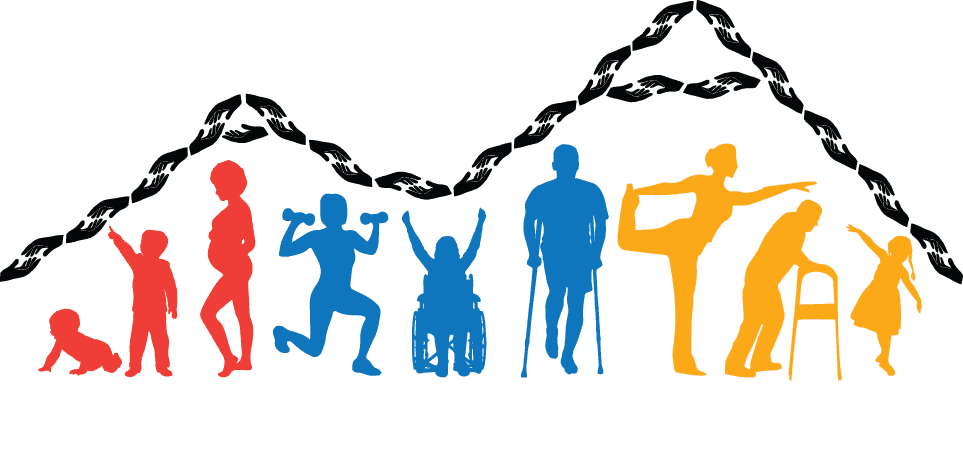Spinal Cord Injury (SCI)
What is a Spinal Cord Injury?
A spinal cord injury is damage to the spinal cord that causes loss of function. This can include movement and feeling (sensation). Spinal cord injury can affect the movement of your hands, arms, and legs. It can also affect your organs involved with bowel, bladder, and sexual function. Damage to the spinal cord can be caused from trauma or from non-traumatic causes.
- Traumatic Injury: Spinal cord injury can be caused by direct injury. Traumatic injuries are caused from falls, car crashes, sports injuries, or other accidents.
- Non-traumatic Injury: When injuries are not caused by direct physical injury, they are called non-traumatic. This can happen because of an infection, tumour, stroke, or disease.
What is the Level of Injury?
Level of injury is the lowest level of the body that has normal feeling and strength. Below your level of injury, there may be weak or no connections between the brain and the body. Most of the time, the level of injury is different from the injured vertebra. This is because the spinal nerves come out above and below the vertebrae. Bleeding and swelling above and below the affected vertebra bones can also cause more damage.
- Paraplegia (T2 to S5): People with paraplegia have weak or paralyzed legs due to a back injury. Some or all of the leg muscles are weak or paralyzed but hands have normal function. Abdomen and chest muscles can also be affected. Often, bowel, bladder, and sexual function are also affected.
- Tetraplegia (Quadriplegia, C1 to T1): People with tetraplegia have the same weakness as people with paraplegia. Since the injury is in the neck, they also have weakness in their arms, hands, and fingers. With higher injuries, breathing and swallowing can also be affected.
How Severe is the Injury?
How severe the injury depends on how much damage was done to the spinal cord. The most severe is when the cord is fully cut or damaged. The American Spinal Injury Association (ASIA) has a guide for how severe the injury is. A doctor can test patients to find out their ASIA Impairment Scale (AIS). AIS can improve during recovery.
- Complete Injury (AIS A): If there is no feeling or movement in the rectum or anus, this is a complete injury. This is because the spinal cord’s furthest connections control the genitals and anus. A complete injury does not mean that the cord was cut fully. It means that a connection is missing between the brain and the end of the cord. A complete injury is AIS ‘A’. In some cases, there is some spared movement or feeling for several segments below the level of injury. This is called a ‘zone of partial preservation’.
- Incomplete Injury (AIS B-D): With an incomplete injury, some connections are still present below the level of injury. This means that there will be some feeling and movement below the level of the injury. For the injury to be incomplete, there must at least have feeling or muscle activity in the anus or rectum. If this is the case, the injury is at least AIS ‘B’. If there is weak movement below the area of the injury, the injury is AIS ‘C’. If movement is stronger but still not normal, the injury is AIS ‘D’. Normal strength and feeling is classified as AIS ‘E’.
ASIA Impairment Scale (AIS)
A scale that scores how much movement or feeling you have below your level of injury.
What Kind of Recovery Can to Expect
Most of the recovery happens during the first year after injury. Some people might gain a little more recovery for up to 2 or 3 years after the injury. Recovery from spinal cord injury depends on many things- age, type of injury, and other medical conditions all affect recovery. The time and effort patients put into their recovery also play a large role.
Recovery from spinal cord injury can mean getting stronger and getting feeling back. Recovery can also mean learning how to live with the injury. Many people don’t have a full recovery. Their body might no longer function exactly like it did before the injury. They might need to learn new ways to do the things they could do before the injury. The more they try, the more they will recover.
Recovery of strength is higher in people with some movement right after the injury (AIS ‘C’ and ‘D’). Most people get some improvement in movement or feeling. Some people do learn to walk again if a lot of spine connections are still there. Talk to the doctor about recovery.
References
Flett, H. (2016, June 15). Spinal cord injury. Retrieved March 11, 2021, from http://www.spinalcordessentials.ca/Handouts/What-is-Spinal-Cord-Injury/
Helpful Links:
Patient handouts about SCI: http://www.spinalcordessentials.ca/
About c1-c8 SCI: https://www.youtube.com/watch?v=YMMBMcmPcis&feature=youtu.be
Clinical Resources
- Community Service SCI Handout
- SCI fact sheet
- One Handed Techniques 1
- Toileting Adaptive Equipment
- Feeding Adaptive Equipment
- Grooming and Hygiene Adaptive Equipment
- Feeding Adaptive Equipment1
- Dressing Adaptive Equipment
- Bathing and Showering Adaptive Equipment
- SCI Complications
- SCI Resources
- Image 166
- Lumbar Spine Patient Conversation and Physical Examination
Patient Education
- Spinal Cord Injury
- Yes You Can SCI Education
- Spinal Cord Injury
- Cooking and Meal Preparation
- Dressing Techniques
- Bathroom Safety
- Bathing and Showering
- Resting Hand Splints
- Pressure Relief Techniques 1
- Postural Hypotension
- Nerve Pain 1
- Intermittent Catheterization Female
- Intermittent Catheterization Male
- Foley Catheters
- Bladder and Urinary Tract Infections
- Autonomic Dysreflexia
- Cervical Precautions
- Assistive Devices Program
- Breath Stacking
- Intermittent Catheterization For Women
- Motor Imagery 01
